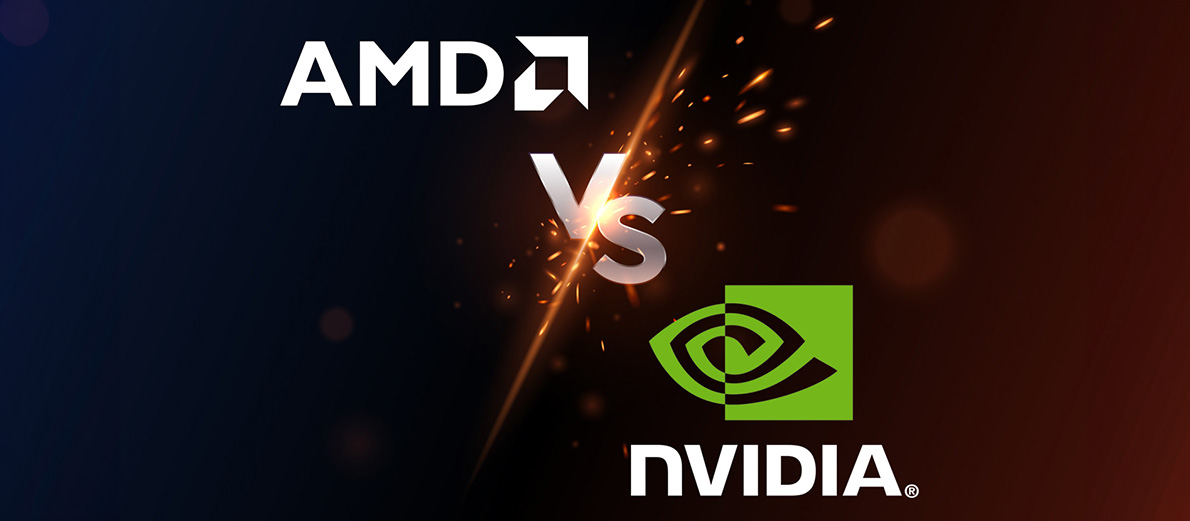The ongoing competition between NVIDIA and AMD has shaped the graphics card industry for decades. Both brands are well-known for producing powerful GPUs used in gaming, video editing, AI computing, and professional design. In this article, we will explore how the rivalry between NVIDIA and AMD has developed, how their technologies differ, and how you can choose the right GPU for your needs.
The Rise of NVIDIA and AMD in Graphics Technology
To understand the importance of NVIDIA and AMD, it’s helpful to look back at how each company gained its position.
NVIDIA: Leading Innovation in GPU Technology
NVIDIA was founded in 1993 and quickly became a leader in high-performance graphics. Their GPUs are known for:
- Advanced ray tracing technology
- AI-powered rendering
- Strong software optimization
- Tensor cores for AI acceleration
NVIDIA has a reputation for delivering high frame rates and smooth rendering, especially for high-end gaming and professional creative workloads.
- Competitive pricing
- Strong multi-tasking performance
- Efficient architecture
- Integrated CPUs with built-in graphics
AMD’s strategy is to offer high performance at lower cost, making it a favorite among budget and mid-range PC builders.
NVIDIA and AMD in Gaming Performance
When it comes to gaming, NVIDIA and AMD both offer GPUs for every level:
entry-level, mid-range, and high-end.
Where NVIDIA Excels
- Better ray tracing performance
- Superior frame boosting features like DLSS (Deep Learning Super Sampling)
- Stronger driver stability in most games
Where AMD Excels
- More VRAM for the price
- Feature FSR (FidelityFX Super Resolution) which works on multiple GPU brands
- Better value GPUs for 1080p and 1440p gaming
If you play visually rich AAA games, NVIDIA may offer smoother real-time lighting. If you want strong performance without spending too much, AMD is often the better choice.
AI and Professional Workloads: The Future of GPUs
The competition between NVIDIA and AMD is no longer limited to gaming. Both companies are heavily involved in:
- Artificial intelligence
- Machine learning
- 3D rendering
- Video editing
- Virtual reality
NVIDIA Leads in AI
NVIDIA GPUs are widely used in data centers and research labs because of their CUDA cores and AI-optimized drivers.
AMD Competes with Open Software
AMD uses open-source platforms like ROCm, giving developers more flexibility. This is gaining popularity among researchers and cloud platforms.
Price Comparison and Budget Considerations
One of the biggest differences between NVIDIA and AMD is pricing.
| Category | NVIDIA | AMD |
|---|---|---|
| Entry-Level | Slightly expensive | Very affordable |
| Mid-Range | Competitive but higher cost | Best value for money |
| High-End | Usually dominant | Competes strongly but cheaper |
If you’re on a tight budget, AMD often provides more performance per dollar.
Choosing Between NVIDIA and AMD: Which Is Right for You?
To choose the best GPU, consider your needs:
Choose NVIDIA if you:
- Play AAA games with ray tracing
- Do AI development or 3D animation
- Need maximum performance regardless of price
Choose AMD if you:
- Want strong performance at a lower cost
- Are upgrading an existing AMD-based system
- Play competitive esports games where FPS matters more than effects
Future Outlook: What’s Next for NVIDIA and AMD?
Both companies are investing heavily in:
- Cloud gaming platforms
- AI image rendering
- Energy-efficient GPU architecture
The rivalry between NVIDIA and AMD will continue to push innovation, meaning better technology for consumers in the future.
Conclusion
The battle between NVIDIA and AMD has shaped the GPU world and will continue to do so. Whether you’re a gamer, content creator, AI researcher, or casual PC user, both brands offer strong, reliable options. Your choice ultimately depends on your usage, budget, and performance needs. By understanding their strengths and differences, you can confidently select the best GPU for your system.

